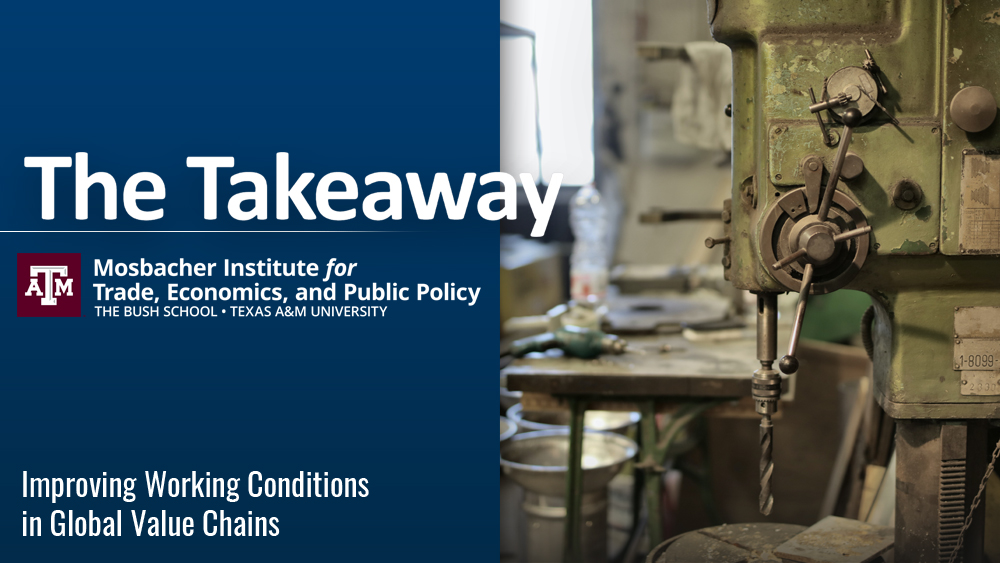
Attempts to improve working conditions for workers in developing countries have had limited success. Recent Mosbacher Institute research shows that transparency could lead to better outcomes.
Revelations about forced labor and other adverse working conditions in global value chains persist, despite a variety of efforts to improve conditions for workers in developing countries. The United Nations’ Ruggie Principles provide a framework for incorporating human rights issues into supply chain regulations, but regulations only tell corporations what to do, not how to do it.
In “Improving Working Conditions in Global Value Chains,” the latest issue of The Takeaway, an economist at the Texas A&M University Bush School of Government & Public Service, Dr. Raymond Robertson, reports that transparency is one approach that shows promise of being effective at a relatively low cost. Robertson’s recent research found that making factory-level working conditions publicly available changed factory incentives and led to improved working conditions in garment factories.
The Takeaway is a publication of the Mosbacher Institute for Trade, Economics, and Public Policy at the Bush School at Texas A&M University.
